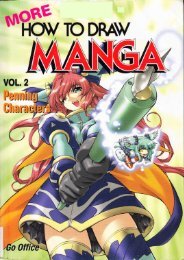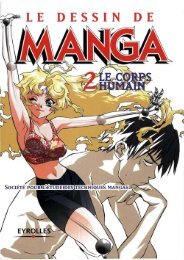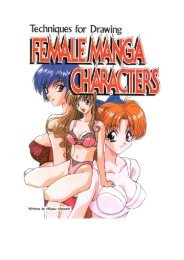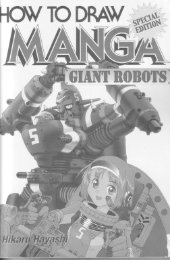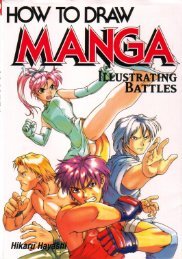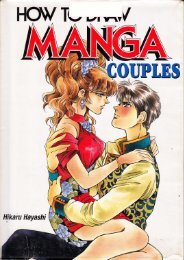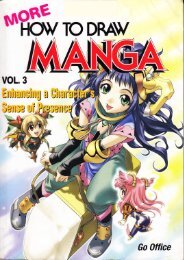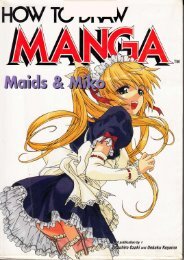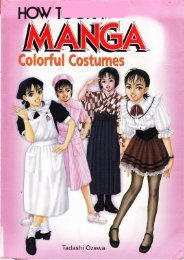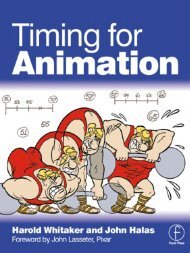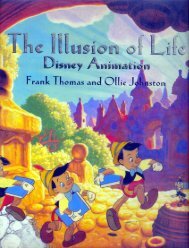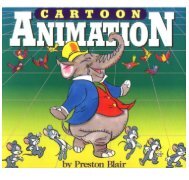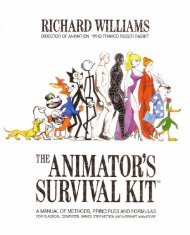Character animation crash course
Create successful ePaper yourself
Turn your PDF publications into a flip-book with our unique Google optimized e-Paper software.
DEFINITION OF TERMS<br />
XXI<br />
Staggered Timing - Parts of a scene or piece of <strong>animation</strong> that do not occur at<br />
the sa me time. For example, several characters doing the same dance step could be<br />
on staggered timing (one frame earlier, two frames later, etc.) in order for the group<br />
action to appear more naturally on the screen.<br />
Staging -The positioning of characters in a scene for maximum emotional content<br />
and clear readability of actions.<br />
Storytelling Drawings -The drawings in a scene that succinctly communicate<br />
to an audience the important ideas expressed through the action.<br />
Straight-Ahead - The technique of animating in order, from the beginning to<br />
the end of a scene, to achieve a natural flow from one drawing to the next. Not<br />
as easily controlled as the pose-to-pose method, straight-ahead <strong>animation</strong> requires<br />
strict attention to the maintaining of volumes and sizes, but can result in very fluidlooking<br />
movement.<br />
Strobing -The unwanted effect of a vibration across the screen, usually associated<br />
with vertical shapes perpendicular to the horizon. Strobing would occur if a character<br />
were animated on twos while the camera panned on ones - almost the optical versi<br />
on of a "stagger." The way to fix this problem is to put in the single inbetweens on<br />
ones for the duration of the pan.<br />
Successive Breaking of Joints- The term first coined by animator Art Babbitt<br />
to describe how a character can move fluidly based on anatomy. You can show a<br />
"wave" action in a character's arm, for example, by having the arm travel downward,<br />
"breaking" at the elbow, and then successively "breaking" at the wrist as the rest of<br />
the arm catches up, and then breaking in the opposite direction at elbow and wrist<br />
on the way back up.<br />
Texture - The appearance of differences in timing, spacing, pacing, and emotional<br />
range within an <strong>animation</strong> scene, in order to keep the scene interesting and believable<br />
to an audience.<br />
Thumbnails -A series of quick sketches (usually small, thus "thumbnail") used to<br />
figure out major poses and storytelling drawings in a scene.<br />
Tie-Downs - The drawings made as a secondary stage in rough <strong>animation</strong> that<br />
further refine the expressions and details throughout a scene, usually made by an<br />
animator on top of his own initial roughs.



